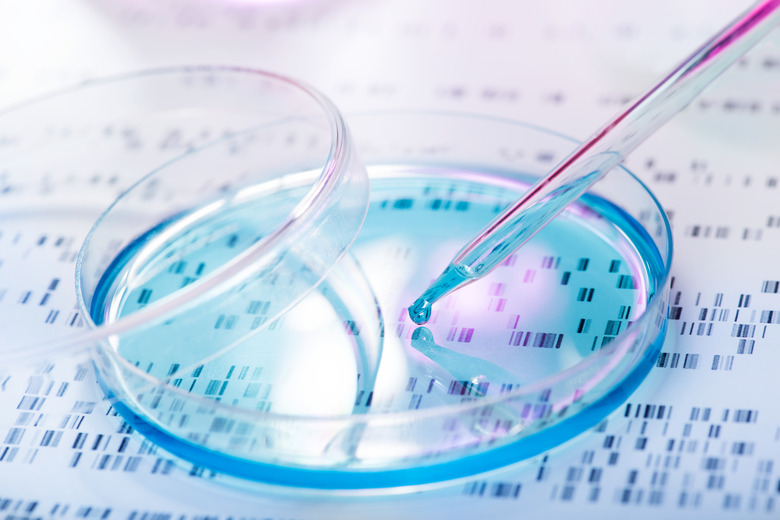Chemicals Used In Forensic Science
Forensic science uses technological and chemistry to gather and analyze evidence about crimes. The field includes tasks such as collecting fingerprints or testing for chemicals in blood and body tissues. Forensic scientists have a standard repertoire of chemical agents for their work. These agents can reveal evidence that may be hidden to the naked eye and provide clues to what happened at a crime scene. Thanks to these chemicals, and those who use them, police agencies around the world have solved many crimes.
TL;DR (Too Long; Didn't Read)
Forensic scientists use a variety of different chemicals for different purposes like dusting for prints, checking an area for blood, and cleaning and disinfecting a crime scene.
Fingerprinting Chemicals
Fingerprinting Chemicals
Forensic scientists rely on four primary chemicals to reveal and collect fingerprints: iodine, cyanoacrylate, silver nitrate and ninhydrin. These chemicals react to substances within the fingerprint, such as oil and sweat, making the print change color so analysts can see it better.
Forensic scientists usually use iodine and cyanoacrylate — better known under the brand name Super Glue — by heating them to create fumes. They use silver nitrate and ninhydrin as a spray or dip. Other chemicals used for fingerprinting are diazafluoren 1, or DFO-1; rhodamine; ardrox; sudan black; thenoyl europium chelate, or TEC; and acid fushin. These chemicals help develop fingerprints on more porous surfaces or enhance prints already produced by other chemicals, by dying and stabilizing the prints.
Blood Evidence
Blood Evidence
Fluorescein causes a chemical reaction between oxygen and the hemoglobin present in blood. This chemical is useful for fine blood stains and smears which may appear in different crime scenes.
Another chemical used for blood evidence is luminol. Like other blood-test chemicals, it reacts with iron in the blood. Luminol can reveal blood evidence even if someone has tried to clean the blood up.
The forensic scientist sprays these chemicals on the suspect area and observes the area to see if fluorescence occurs.
Luminol has limited use in forensic science, in that other chemicals like bleach can produce the same fluorescence as blood.
Other Agents
Other Agents
Forensic scientists use common chemicals like hydrogen peroxide and alcohol in combination with the other chemicals at their disposal to produce better test results or speed reaction times. They also can use these chemicals as disinfectants; for instance, bleach can sterilize work areas or forensic tools.
Forensic scientists also may use acids to perform work like revealing etchings on metal. The fact that forensics requires the use of so many chemicals is why anyone interested in a career in forensic science must take chemistry courses. Many universities offer classes in forensic science as well.
Cite This Article
MLA
Thibodeaux, Wanda. "Chemicals Used In Forensic Science" sciencing.com, https://www.sciencing.com/chemicals-used-forensic-science-6865961/. 15 May 2018.
APA
Thibodeaux, Wanda. (2018, May 15). Chemicals Used In Forensic Science. sciencing.com. Retrieved from https://www.sciencing.com/chemicals-used-forensic-science-6865961/
Chicago
Thibodeaux, Wanda. Chemicals Used In Forensic Science last modified August 30, 2022. https://www.sciencing.com/chemicals-used-forensic-science-6865961/
